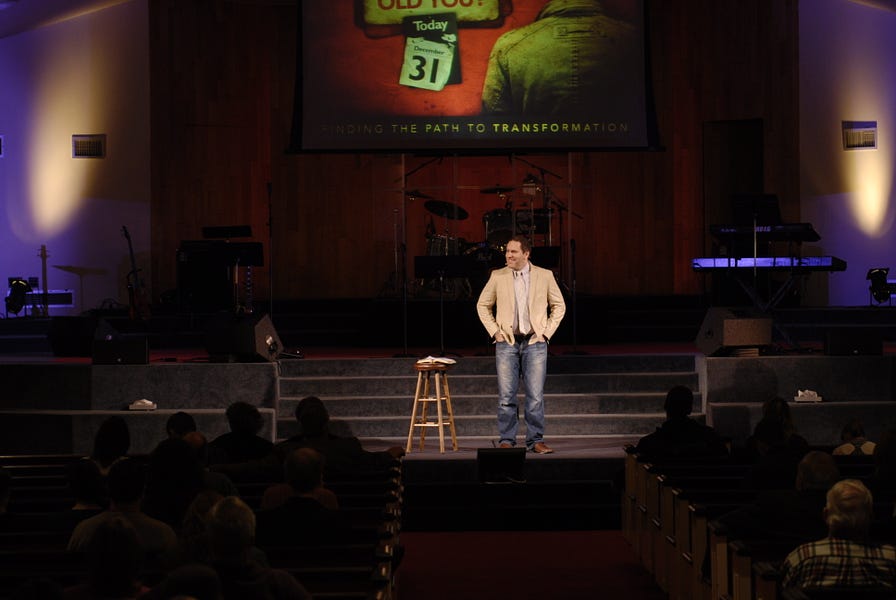Sixties Fan
Diamond Member
- Mar 6, 2017
- 67,567
- 12,083
- 2,290
- Thread starter
- #841
[ Thou Shalt Do No Harm ]
[ When Republicans do not care about women's health and lives, but only about putting more babies into the world. Women die. Is that what they really wanted? More women sick, more women dying? ]
Half of the counties in Texas, according to state data, lack a single specialist in women’s health: no ob-gyn, no nurse, no midwife who can treat mothers and their babies. But Parkland, one of thirty-two hospitals credentialled to treat high-risk-pregnancy cases, takes all comers. More than ten thousand babies are born there every year, and pregnant people also show up in its hectic emergency room with conditions that threaten their lives. Some patients have hemorrhages and spiralling infections; some are critically ill with cancer or heart disease; some are at acute risk of stroke if they bring their pregnancies to term.
After Roe fell, two laws even stricter than S.B. 8 took effect in Texas: an outright abortion ban, rooted in the eighteen-hundreds, which permitted abortions only “for the purposes of saving the life of the mother,” and a trigger law, which declared that performing an abortion when a woman is not “at risk of death” or threatened with “substantial impairment of a major bodily function” is punishable by up to life in prison. In Texas, a doctor who performs an abortion is now subject to a felony charge. Providers in the state, as in other places where abortion is illegal, have had to navigate multiple abortion bans at once, while contending with the exceptions intrinsic in each of them.
Since the new laws were put in place, Charles Brown, a perinatologist in Austin and the chair of the American College of Obstetricians and Gynecologists in Texas, has had dozens of conversations with ob-gyns in the state who are unsure how, or whether, to treat women in need of acute care. “When these women get sick, they get sick fast,” he told me. “It is minutes, not days—you’re lucky if you get a couple of hours before women get radically ill.” But the laws are difficult to parse, and not every case is clear. “When you can go to jail, you get really involved in, Are we covered by the unless? And that is what slows things down.”
In recent interviews, twelve Texas doctors told me that, under the legal conditions that curtail their ability to treat pregnant women in medical distress, the risk of patient harm had escalated. The doctors said that they felt a professional and public obligation not to hide what they were seeing every day, although several requested anonymity to discuss sensitive cases.
Five Texas doctors I spoke with mentioned that, in their hospitals, pregnancy complications like sepsis, which is life-threatening, were on the rise. “We are seeing more frequent first-trimester complications,” a Houston doctor said, “and my colleagues and I sense that it’s leading to more death.”
Because they rely on evidence-based medicine, the doctors are impatiently waiting for statistical data to corroborate what they’ve seen in the past year and a half. The surge in complications, they think, may be attributed, in part, to the fact that more women have been arriving at the E.R. with sepsis after experiencing incomplete abortions. When traces of fetal tissue are left in the uterus, an infection that leads to sepsis sometimes follows.
After Texas restricted abortion, many women took matters into their own hands: ending their pregnancies by taking pills or herbal tinctures, or by travelling out of state, or to Mexico, to access a legal procedure. When complications arise, the doctor in Houston told me, patients who are fearful about admitting to authorities that they attempted abortion may be slow to seek care. “If there were procedures done,” the doctor said, “she’s not going to tell me because I’m obligated by law to report anytime there’s a termination complication. They don’t trust me, and I don’t know if they’re always telling me exactly what happened, so you’re left trying to figure it out.
-----------
“Life as we know it has been turned upside down,” Emily Schneider, the legislative chair of the American College of Obstetricians and Gynecologists in Colorado, said. “Let’s just say I got started on antidepressants last summer.” Schneider, herself an ob-gyn, has got used to seeing patients not just from Texas but also from Oklahoma, Wyoming, Idaho, and Louisiana. Some have called labor and delivery at the hospital where she works: “My baby has an anomaly. Can I come?” Others have shown up at her office unannounced with an ectopic pregnancy.
Not long ago, one of the patients coming to see Schneider from Texas got in a car by herself with a C-section-ectopic pregnancy, a serious complication in which the pregnancy implants in the scar from a previous Cesarean. The ectopic pregnancy ruptured in a deserted area outside Denver, so the woman had to be rushed in an ambulance to the nearest emergency room. There, she underwent a hysterectomy and had to spend days in the I.C.U. to make up for her blood loss. “This is not American health care,” Schneider said of the current system. “It’s Russian roulette.”
Eventually, Schneider said, some provider in Colorado, New Mexico, California, or another state with a liberal stance on abortion would be sued by some institution or individual in one of the states that ban abortion. Still, no matter how physically and emotionally taxing, practicing in a city like Denver was itself a privilege in the post-Roe age. “There’s this overwhelming sense of ‘Well, bring it on,’ ” Schneider said. “We’re not going to turn these patients away.”
In Texas, several exhausted doctors told me they had considered moving elsewhere. But they have yet to do so, in part because they can’t imagine abandoning the women who come in every day, who are themselves deeply upset by the bans, and who are too poor to go elsewhere for abortions. As the Parkland ob-gyn put it to me bluntly, “Our patients don’t have the ability to pack up and leave.” So she and her Clements colleague, and their colleagues, will continue, for now, to push the boundaries of the law on the basis of evidence that they collected on their own initiative.
If that stance proves controversial in Texas, the Parkland doctor believes that pushback from doctors within individual hospitals matters, not just for pregnant women in extremis but for every person in the state who will need to rely at some point on an ob-gyn. New data from the Association of American Medical Colleges shows that states that banned abortion have seen a drop in applications for obstetrics-and-gynecology residencies. Naturally, students considering coming to Texas are asking, How has the hospital responded to the bans? What does ob-gyn training look like these days? And what are you able to offer patients? “When nobody wants to train in Texas, as the physicians get older and retire, there will be no ob-gyns in the state,” the doctor told me. “And that’s when you’ll really see maternal mortality go up.” ♦
(full article online)

 www.newyorker.com
www.newyorker.com
[ When Republicans do not care about women's health and lives, but only about putting more babies into the world. Women die. Is that what they really wanted? More women sick, more women dying? ]
Half of the counties in Texas, according to state data, lack a single specialist in women’s health: no ob-gyn, no nurse, no midwife who can treat mothers and their babies. But Parkland, one of thirty-two hospitals credentialled to treat high-risk-pregnancy cases, takes all comers. More than ten thousand babies are born there every year, and pregnant people also show up in its hectic emergency room with conditions that threaten their lives. Some patients have hemorrhages and spiralling infections; some are critically ill with cancer or heart disease; some are at acute risk of stroke if they bring their pregnancies to term.
After Roe fell, two laws even stricter than S.B. 8 took effect in Texas: an outright abortion ban, rooted in the eighteen-hundreds, which permitted abortions only “for the purposes of saving the life of the mother,” and a trigger law, which declared that performing an abortion when a woman is not “at risk of death” or threatened with “substantial impairment of a major bodily function” is punishable by up to life in prison. In Texas, a doctor who performs an abortion is now subject to a felony charge. Providers in the state, as in other places where abortion is illegal, have had to navigate multiple abortion bans at once, while contending with the exceptions intrinsic in each of them.
Since the new laws were put in place, Charles Brown, a perinatologist in Austin and the chair of the American College of Obstetricians and Gynecologists in Texas, has had dozens of conversations with ob-gyns in the state who are unsure how, or whether, to treat women in need of acute care. “When these women get sick, they get sick fast,” he told me. “It is minutes, not days—you’re lucky if you get a couple of hours before women get radically ill.” But the laws are difficult to parse, and not every case is clear. “When you can go to jail, you get really involved in, Are we covered by the unless? And that is what slows things down.”
In recent interviews, twelve Texas doctors told me that, under the legal conditions that curtail their ability to treat pregnant women in medical distress, the risk of patient harm had escalated. The doctors said that they felt a professional and public obligation not to hide what they were seeing every day, although several requested anonymity to discuss sensitive cases.
Five Texas doctors I spoke with mentioned that, in their hospitals, pregnancy complications like sepsis, which is life-threatening, were on the rise. “We are seeing more frequent first-trimester complications,” a Houston doctor said, “and my colleagues and I sense that it’s leading to more death.”
Because they rely on evidence-based medicine, the doctors are impatiently waiting for statistical data to corroborate what they’ve seen in the past year and a half. The surge in complications, they think, may be attributed, in part, to the fact that more women have been arriving at the E.R. with sepsis after experiencing incomplete abortions. When traces of fetal tissue are left in the uterus, an infection that leads to sepsis sometimes follows.
After Texas restricted abortion, many women took matters into their own hands: ending their pregnancies by taking pills or herbal tinctures, or by travelling out of state, or to Mexico, to access a legal procedure. When complications arise, the doctor in Houston told me, patients who are fearful about admitting to authorities that they attempted abortion may be slow to seek care. “If there were procedures done,” the doctor said, “she’s not going to tell me because I’m obligated by law to report anytime there’s a termination complication. They don’t trust me, and I don’t know if they’re always telling me exactly what happened, so you’re left trying to figure it out.
-----------
“Life as we know it has been turned upside down,” Emily Schneider, the legislative chair of the American College of Obstetricians and Gynecologists in Colorado, said. “Let’s just say I got started on antidepressants last summer.” Schneider, herself an ob-gyn, has got used to seeing patients not just from Texas but also from Oklahoma, Wyoming, Idaho, and Louisiana. Some have called labor and delivery at the hospital where she works: “My baby has an anomaly. Can I come?” Others have shown up at her office unannounced with an ectopic pregnancy.
Not long ago, one of the patients coming to see Schneider from Texas got in a car by herself with a C-section-ectopic pregnancy, a serious complication in which the pregnancy implants in the scar from a previous Cesarean. The ectopic pregnancy ruptured in a deserted area outside Denver, so the woman had to be rushed in an ambulance to the nearest emergency room. There, she underwent a hysterectomy and had to spend days in the I.C.U. to make up for her blood loss. “This is not American health care,” Schneider said of the current system. “It’s Russian roulette.”
Eventually, Schneider said, some provider in Colorado, New Mexico, California, or another state with a liberal stance on abortion would be sued by some institution or individual in one of the states that ban abortion. Still, no matter how physically and emotionally taxing, practicing in a city like Denver was itself a privilege in the post-Roe age. “There’s this overwhelming sense of ‘Well, bring it on,’ ” Schneider said. “We’re not going to turn these patients away.”
In Texas, several exhausted doctors told me they had considered moving elsewhere. But they have yet to do so, in part because they can’t imagine abandoning the women who come in every day, who are themselves deeply upset by the bans, and who are too poor to go elsewhere for abortions. As the Parkland ob-gyn put it to me bluntly, “Our patients don’t have the ability to pack up and leave.” So she and her Clements colleague, and their colleagues, will continue, for now, to push the boundaries of the law on the basis of evidence that they collected on their own initiative.
If that stance proves controversial in Texas, the Parkland doctor believes that pushback from doctors within individual hospitals matters, not just for pregnant women in extremis but for every person in the state who will need to rely at some point on an ob-gyn. New data from the Association of American Medical Colleges shows that states that banned abortion have seen a drop in applications for obstetrics-and-gynecology residencies. Naturally, students considering coming to Texas are asking, How has the hospital responded to the bans? What does ob-gyn training look like these days? And what are you able to offer patients? “When nobody wants to train in Texas, as the physicians get older and retire, there will be no ob-gyns in the state,” the doctor told me. “And that’s when you’ll really see maternal mortality go up.” ♦
(full article online)

In the Post-Roe Era, Letting Pregnant Patients Get Sickerâby Design
Fearing legal repercussions, doctors in Texas say they are risking grave patient harm to comply with new abortion restrictions.



